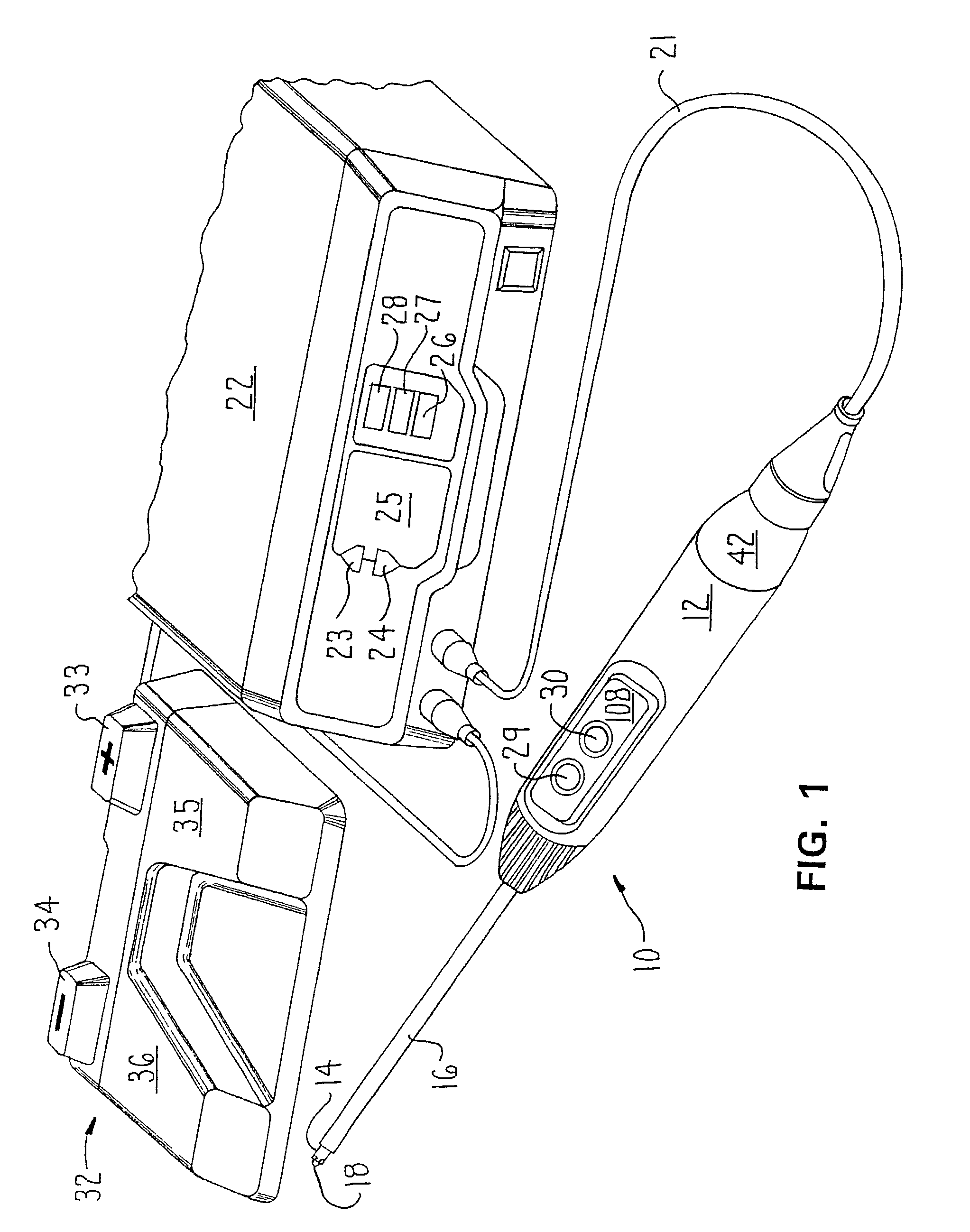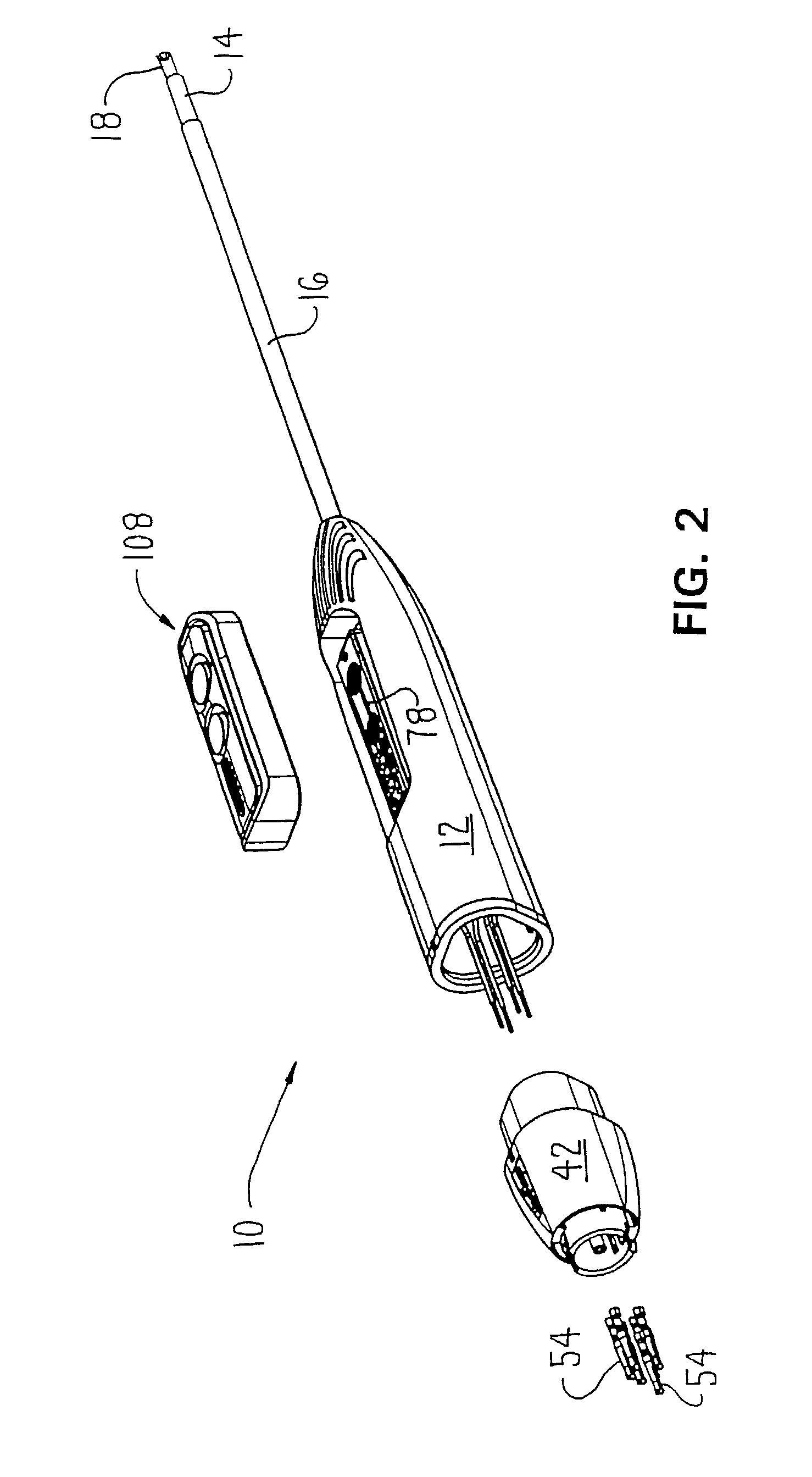System and method for regulating an amount of thermal energy generated by an electrosurgical tool
a technology of thermal energy and thermal energy, applied in the field of power-actuated surgical tools, can solve the problems of limiting the current available tools, vaporizing and forming bubbles, and forming bubbles on the surface of active electrodes, and achieve the effect of facilitating the flow of conductive fluid
- Summary
- Abstract
- Description
- Claims
- Application Information
AI Technical Summary
Benefits of technology
Problems solved by technology
Method used
Image
Examples
Embodiment Construction
[0057]FIGS. 1 and 2 depict the basic electrosurgical tool 10 of this invention. The tool 10 includes an elongated shell-like nose cone 12 that serves as the handle for the tool. Extending forward from the front end of the nose cone 12 is a shaft 14 formed from conductive metal. (In this application, “front”, “forward” and “distal” shall be understood to mean towards the surgical site to which the tool is applied. “Rear”, “rearwardly” and “proximal” shall be understood to mean away from the surgical site.) Substantially all of the shaft 14, except for its distal end, is covered by an insulating tube 16.
[0058]A tip assembly 18 extends forward from the distal end of shaft 14. An electrode 20 is housed in the tip assembly 18. More precisely, electrode 20 is considered an active electrode and the exposed distal end of shaft 14 functions as a return or reference electrode. When the electrosurgical tool 10 is actuated, current flows from electrode 20 to the exposed end of shaft 14. The cur...
PUM
 Login to View More
Login to View More Abstract
Description
Claims
Application Information
 Login to View More
Login to View More - R&D
- Intellectual Property
- Life Sciences
- Materials
- Tech Scout
- Unparalleled Data Quality
- Higher Quality Content
- 60% Fewer Hallucinations
Browse by: Latest US Patents, China's latest patents, Technical Efficacy Thesaurus, Application Domain, Technology Topic, Popular Technical Reports.
© 2025 PatSnap. All rights reserved.Legal|Privacy policy|Modern Slavery Act Transparency Statement|Sitemap|About US| Contact US: help@patsnap.com



